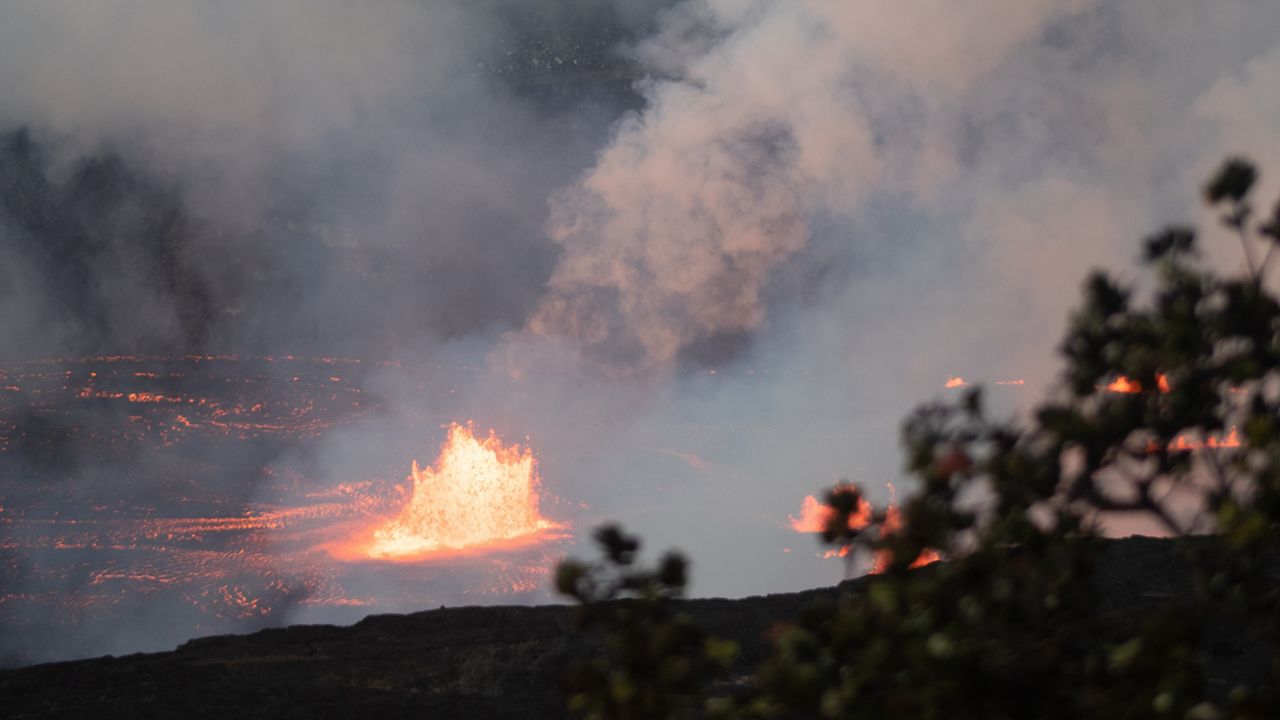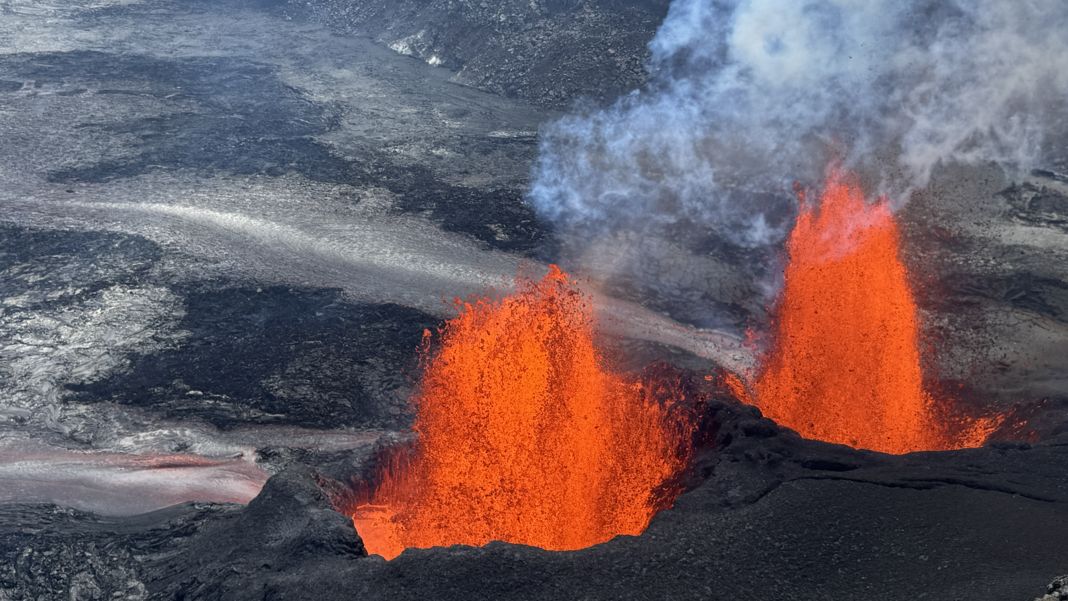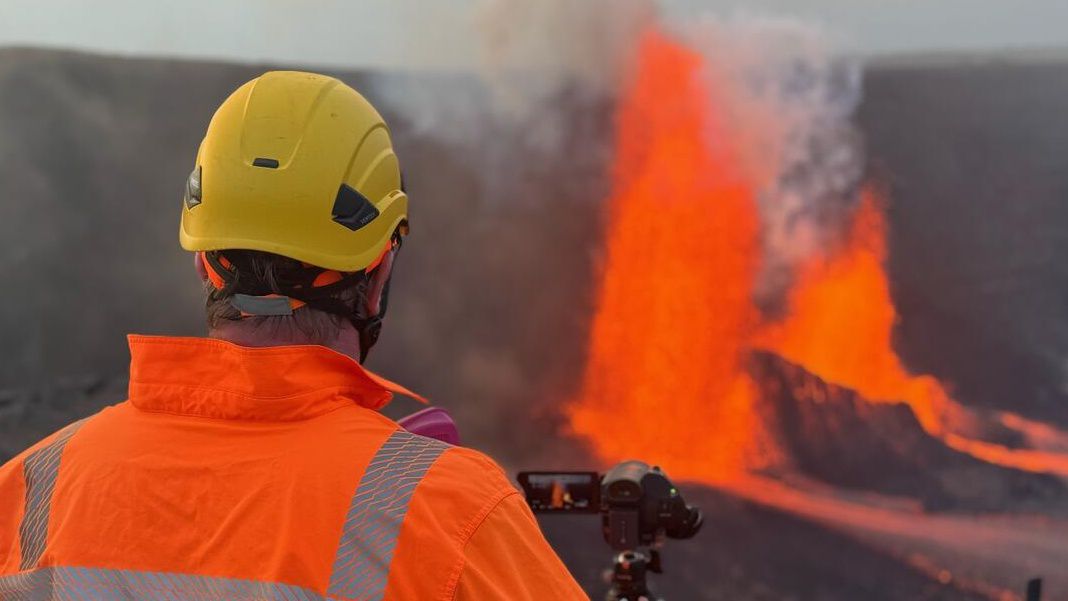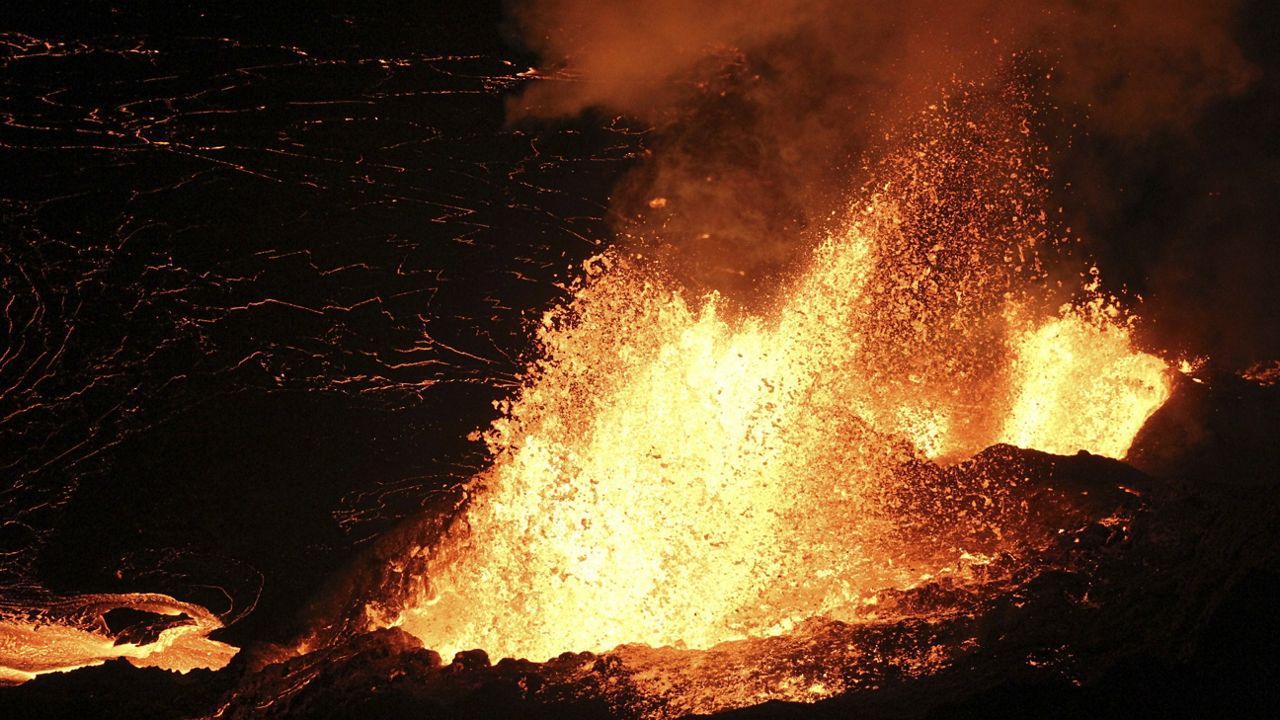HAWAII VOLCANOES NATIONAL PARK, Hawaii — Just before sunrise on Wednesday, the Kilauea volcano on Hawaii Island erupted. A series of earthquakes started Tuesday night, and fissures opened up within Halema‘uma‘u crater in the summit caldera, according to a news release from the Hawaiian Volcano Observatory. Live webcam footage showed lava spreading across the crater floor, creating a lava lake. HVO said at the onset of the eruption, the effusion rate was higher than the effusion rates at the onset of the last three Kilauea summit eruptions.
On Thursday morning, HVO officials lowered the volcano’s alert from “warning” to “watch,” as effusion rates declined. HVO expects the eruption to stay within Halema‘uma‘u crater. Officials also determined that hazards, including significant volcanic ash, are confined to an area within Hawaii Volcanoes National Park that has been closed since 2008.
Lava fountains’ heights within the crater have decreased but remain as high as 33 feet.
Lower effusion rates do not mean that the eruption will end soon, as they are more sustainable over a longer period of time, HVO officials told Spectrum News Hawaii in an email.
The last three summit eruptions at Kilauea have lasted five months, 14 months, and two months.
The eruption plume, which is mostly composed of sulfur dioxide, continues rising to 10,000 feet above sea level as it did on Wednesday. Initially, HVO gas geochemists collected data that showed 65,000 tonnes per day of sulfur dioxide was being emitted from the volcano. This rate is similar to the onsets of summit eruptions in 2020 and 2021. However, as of Thursday, the concentration of sulfur dioxide lowered with the drop in effusion rate.
As sulfur dioxide is released, it reacts with the atmosphere and creates vog (volcanic smog). On Thursday, vog was visible downwind of Kilauea. Vog is a health hazard for people, damages plants, and affects animals. Find out more on the Hawaii Interagency Vog Information Dashboard.
Within the national park, trade winds are currently “pretty brisk,” according to HVNP spokesperson Jessica Ferracane. She said trade winds are blowing the vog away from viewing areas. However, she said that could change, and people with asthma, respiratory problems, heart problems, young children and pregnant women should avoid areas with poor air quality.
“Right now, the air quality is good in the park,” said Ferracane.
For residents and tourists who wish to see the eruption in person, Ferracane recommends avoiding “peak times” like sunset. The park is open 24 hours a day.
“Right now, I’m looking at a queue in the Visitor Center parking lot, which is right outside my office, and it is packed,” said Ferracane to Spectrum News Hawaii. “We’re going to have to start directing traffic here pretty soon.”
Ferracane encouraged visitors who come after dark to bring a flashlight or headlamp.
“It is super dark here,” said Ferracane. “There are definitely hazards. … The edge of the caldera is 500 feet straight down in some places. There are hidden earth cracks. There can be earthquakes at anytime.”
Michelle Broder Van Dyke covers the Hawaiian Islands for Spectrum News Hawaii. Email her at michelle.brodervandyke@charter.com.








